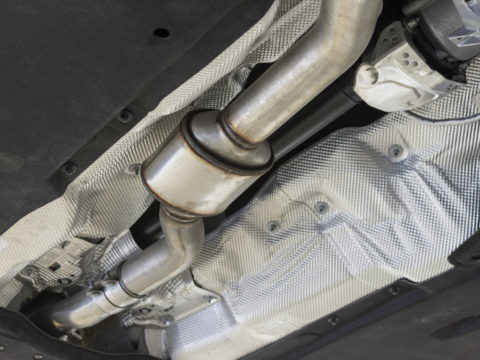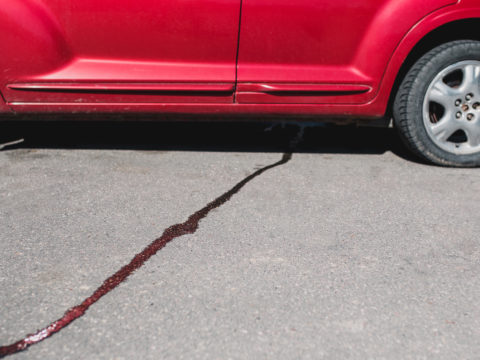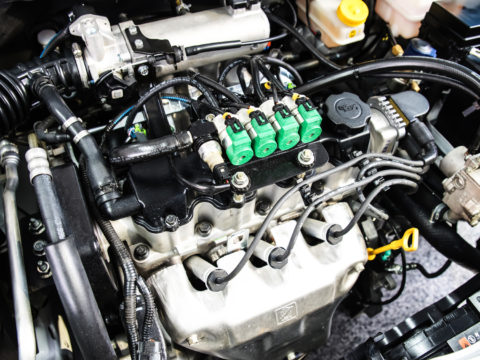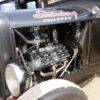A charcoal canister is a crucial component of your vehicle and a part of your car’s emissions control system. This canister is filled with charcoal, which absorbs fuel vapor, helps prevent excessive exhaust, and contributes to pollution. When the vapors are absorbed or blocked, they are released or returned to the engine through a purge valve. At this stage, they are burned in the engine to lessen their environmental impact.
Contents
Where Can You Find the Charcoal Canister?
You’ll find the charcoal canister under the car in most vehicles and close to the fuel tank. It’s typically not easy to see, as it’s well hidden under a hard plastic cover. The charcoal canister is generally rectangular or cylindrical and while they are situated close to the fuel tank and throttle, there’s usually a bit of space between them. You’ll notice two ports, input and output, which are located side by side.
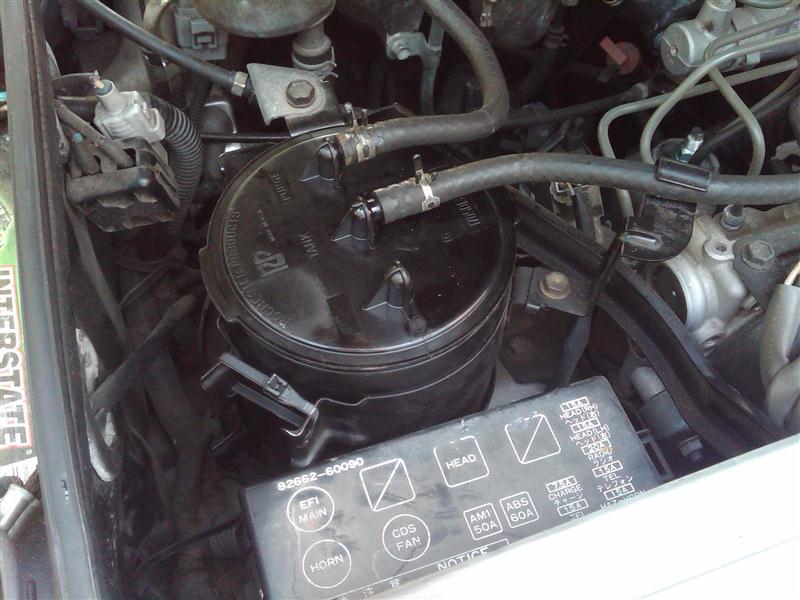
What’s Inside an Evap Charcoal Canister?
The Evap charcoal canister is filled with activated charcoal. This substance is ideal for absorbing and storing gasoline vapors. The canister stores the vapors until the engine is used.
How the System Works
A charcoal canister’s primary task is to absorb fuel vapor, which remains in this chamber when the vehicle is shut off. This process ensures that no air is flowing into this space, which allows some of the fuel to become a gas by lowering the pressure in the gas tank and increasing the evaporation rate.
Gas is trapped in the canister to prevent it from being released into the air until the engine starts. Once the car’s engine starts, a suction inside the intake opens the purge valve and pulls the fuel from the canister, which is burned in the engine. This process continues as you drive until the car’s engine is turned off.
How Important Is the Evap Canister in Your Car?
An Evap (Evaporative Emission Control System) is an important part of your vehicle’s fuel system because it prevents dangerous fumes from releasing into the air from your gas tank. The canister provides a safe, environmentally friendly method of keeping your gas working at maximum efficiency while powering the engine.
Is a Charcoal Canister Necessary?
It’s possible to drive without a charcoal canister, though you’ll notice the check engine light will stay on. You can unplug the pressure sensor that undoes the bolts from the charcoal canister, which makes it easy to remove. While removing the canister is not harmful, it’s crucial to ensure it’s put back into place before your car is inspected for a SMOG inspection.
Can You Bypass the Charcoal Canister?
You can remove a charcoal canister and bypass this mechanism, though it’s not recommended because your vehicle will fail an emissions test.
Can You Safely Drive Without It?
While it’s not immediately harmful to drive without a charcoal canister, the gas fumes that escape from your vehicle are considered toxic to the environment. Over time, these vapors will collect in the gas tank, which creates a strong smell of fuel inside the car.
What Causes Charcoal Canister Failure?
One of the top reasons for charcoal canister failure is when you “top off” your gas tank. This situation causes fuel to overflow, which can flood the canister and negatively impact its function. Your car’s engine light will indicate an issue with the charcoal canister or the engine, which is essential to note if you’re scheduling a maintenance appointment with your mechanic.
How to Tell If the Evap Canister Is Clogged
If your Evap canister is clogged, you’ll likely notice the Check Engine Light on and a distinct fuel odor in your car. This indicator may also be a leak in the fuel tank or a complete collapse, which must be investigated immediately.
Symptoms of a Bad Charcoal Canister
There are some essential symptoms you’ll notice which indicates a charcoal canister failure, which includes:
- Your Check Engine Light is often the first indicator that there’s a problem with your charcoal canister’s function.
- Higher emissions occur when your canister isn’t working at all or functioning poorly. When your vehicle fails an emissions test, this is often directly related to your Evap canister’s function.
- Poor engine performance and gas mileage
- Fuel odor will become prominent from the inside of your car, which means there may be a leak or malfunction.
- Pinging sounds are another symptom that your vapor canister may not be working at its full potential.
How to Test Your Car’s Canister
In most cases, you’ll see noticeable symptoms that indicate your canister isn’t working correctly or at all. To confirm that your charcoal canister is the culprit, you’ll need to locate this box and inspect it for leaks or damage. You can use a small, handheld vacuum pump and attach it to the top of the canister, then use the hand pump to see if the purge valve is working.
Can You Repair or Fix a Bad Charcoal Canister?
Once you locate your charcoal canister and determine it’s not working, there are several steps you can take for repair.
Steps to Take When Servicing a Clogged Canister
The first step to unclogging the canister is to remove it from your vehicle. You can perform this procedure with a flat-head screwdriver, which is used to disassemble the top and bottom lines from the canister. You can use a socket and a ratchet to remove the charcoal canister near the fuel tank from the bracket.
- Place the canister onto a flat surface, such as a table, and use an air compressor to build pressure to a level of 50 psi, then turn off the compressor.
- Using an air line nozzle with the rubber tip, insert this into the valve pipe on the outer vent located on the top of the canister. You’ll find this at the end of the canister.
- There are two separate pipes on top of the canister, which should be covered with your fingers while using the air release trigger on the air line nozzle. Continue the air-blowing process into the charcoal canister for a total of up to two minutes.
Once you notice the air is coming out of the pipe, this indicates that the canister is clean.
How to Clean a Charcoal Canister
The process of cleaning the charcoal canister is done in the same manner as unclogging. If you find that the canister fails to work after the cleaning process, a complete replacement may be needed.
How to Remove and Replace a Bad Charcoal Canister
Before you remove the charcoal canister, you’ll need jack stands to lift your vehicle safely so that you can reach the canister with adequate support.
- Carefully disconnect all the vapor lines, electrical connectors, and remove hose clamps. It’s important to mark where each disconnection is made, with tape or a label, to ensure they are correctly reattached later.
- It’s relatively easy to remove the canister with essential tools, including a hammer, socket set, and a ratchet. A pair of safety glasses and protective gear is strongly recommended.
- Replace the new canister and ensure that all the same connections are made, including the electrical connections and the vapor line.
FAQs
How Often Should I Replace My Charcoal Canister?
If your charcoal canister is well maintained, it can last the lifetime of the vehicle. When repairs or cleaning are needed, this is an easy process that preserves your canister and keeps it working well so you can avoid a complete replacement.
How Long Does a Charcoal Canister Last?
A charcoal canister can last as long as your car if you clean it regularly and keep it in good condition. For this reason, it’s essential to maintain your canister to ensure it lasts indefinitely.
How Much Does It Cost to Replace an Evap Canister?
The cost of replacing a new charcoal canister ranges from $150 and $500 on average. The exact price depends on your vehicle’s model and makes and other attributes of your car. When a mechanic completes the replacement, you can expect to pay an extra $100.
Is Gas Mileage Impacted by the Charcoal Canister?
Yes, there is a significant impact on your vehicle’s fuel efficiency and gas mileage, making it essential to keep your charcoal canister in good functioning order.

